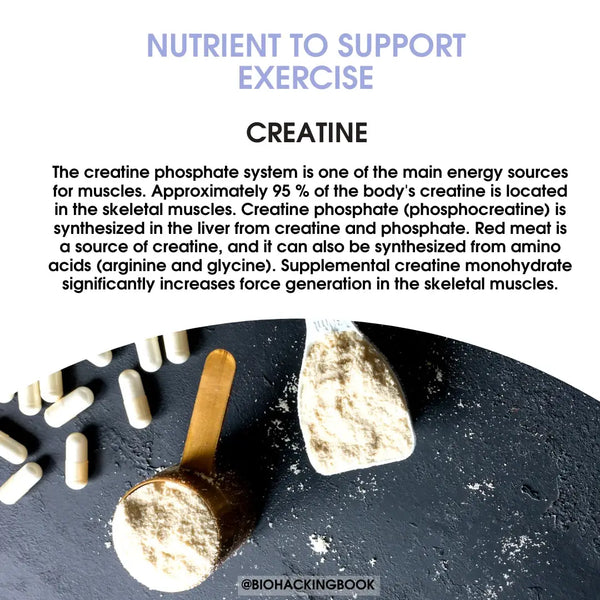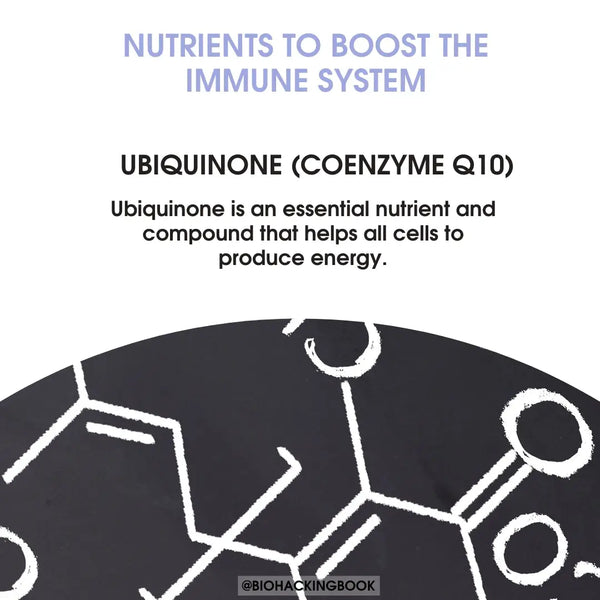Many different nutrients help to recover from training. These include L-glutamine, curcumin, creatine, L-arginine, ubiquinone and carnosine. Read more in this article!
L-GLUTAMINE
Glutamine is a conditionally essential amino acid. In the bloodstream, it is the most abundant amino acid and makes up 30 to 35 percent of the nitrogen in the blood. The body can synthesize glutamine itself, but glutamine is also needed from the diet, especially in highly active individuals, chronically stressed and in various health conditions.
Glutamine has several different roles in biochemical and physiological functions. These include:
- An energy source for cells (especially in the small intestine)
- Maintenance and repair of the intestinal mucosa
- An important amino acid in the synthesis of several proteins
- Regulation of acid-base balance in the kidney (produces ammonium ion or ammonia cation)
- Delivery of a carbon atom to the citric acid cycle (ie. energy production cycle)
- Nitrogen delivery for nucleotide synthesis
- Serves as a raw material for glutathione (along with cysteine and with glycine)
- Serves as a precursor to the neurotransmitter glutamate
The health effects of glutamine in the body have been extensively studied. The main beneficial effects include, in particular, an improvement in the balance and condition of the intestine. Among other things, glutamine has been found to help people with food hypersensitivity by reducing the resulting inflammation of the intestinal surface. In addition, glutamine can help correct the so-called leaky gut syndrome and alleviate the inflammatory condition associated with inflammatory bowel disease (IBD).
For athletes and heavy exercisers, glutamine may be helpful in muscle growth and recovery. Glutamine has been found to restore muscle glycogen stores more rapidly after strenuous exercise. Glutamine supplementation can increase growth hormone levels momentarily, which in turn has tissue-repairing effects. According to a 2019 meta-analysis, glutamine has a significant effect on weight reduction, but no effects on athletic performance.
For those recovering from surgery and trauma, glutamine is likely to be of great help in tissue healing and in quenching catabolic reactions.
The best sources of glutamine in the diet are bone broth, whey protein, spirulina, beef, turkey, game, fish, chicken, parmesan cheese, and pork. The best sources of plant-based foods are asparagus, Chinese cabbage, and (long-stemmed) Italian broccoli.
CURCUMIN
Curcumin is a phytochemical isolated from the root of the turmeric plant, which is the single most studied ingredient in the plant. Curcumin gives turmeric plants its yellow color. The use of turmeric root in cooking is quite common in India. Today, many western countries also use turmeric extensively in various dams, sauces and smoothe. However, the intestinal absorption of turmeric root is relatively poor. Black pepper piperine significantly improves the absorption of curcumin. Curcumin is a powerful antioxidant that protects the body from oxidative stress (as a supplement, especially BCM-95 and Meriva-SR patent forms).
Studies in rats have shown that curcumin may alleviate stress by favorably affecting the HPA axis and increasing the production of brain stress factor BDNF in the brain, which is inhibited by chronic stress, among others. Studies of curcumin on post-exercise recovery and performance have been conducted in sedentary to highly active men and women, both young and old, with supplementation duration lasting from a single, acute dose to daily dosages for three months. Various curcumin-based interventions have improved self-perceived measures of pain and tenderness, reduced muscle damage and delayed onset muscle soreness (DOMS), reduced lactate accumulation, ameliorated inflammatory markers, increased markers of antioxidant capacity, diminished markers of oxidative stress, reduced markers of AGEs, and attenuated loss in mean power of single-leg sprints. A 2021 review paper however states that these findings have not been consistently reported.
L-ARGININE
Arginine is classified as a conditionally essential amino acid. In newborns and children, arginine is an essential amino acid, meaning it is needed from food. Adults, on the other hand, are able to synthesize arginine in the urea cycle, but it is also good to get it from food.
Arginine has numerous different functions in the body. These include:
- Removal of ammonia from the body
- Nitric oxide (NO) synthesis
- Creatine synthesis
- Synthesis of glutamic acid and proline (amino acids)
- Conversion to glucose and glycogen (storage sugar)
- Increased secretion of growth hormone and prolactin
- Increasing protein synthesis
- Oxidation of skeletal muscle fatty acids (via AMPK)
Due to the properties described above, arginine has been found to aid in wound healing, cell division, renal detoxification, normal immune function, vasodilation (regulation of blood pressure), and hormone secretion, among others. Arginine taken as a supplement appears to be effective in lowering blood pressure.
One study from 2009 showed that arginine supplementation during the exercise recovery period could increase glucose and insulin concentrations, and decrease free fatty acid (FFA) availability in the blood. Another older study (1999) showed that arginine increases the availability of glucose for muscle glycogen storage during post-exercise recovery. Therefore it may be beneficial to include some arginine in your post-workout shake. The best sources of arginine in the diet are turkey, pork, chicken, lobster and crabs, pumpkin seeds, sesame seeds, many legumes, spirulina, walnuts, spinach, and cheeses.

CREATINE (MONOHYDRATE)
Creatine monohydrate is one of the most widely used and most effective performance supplements. Creatine has a direct effect on the creatine phosphate system - one of the body’s most important energy production mechanisms.
The creatine phosphate system is one of the most important sources of energy for muscles. It is estimated that about 95% of the body's creatine is in the skeletal muscle. Creatine phosphate, or phosphocreatine, is synthesized in the liver from creatine and phosphate, which is obtained directly from ATP. Creatine is obtained directly from red meat, for example, and can also be synthesized from amino acids (arginine and glycine).
Creatine is formed and recycled in a so-called creatine phosphate shuttle. The shuttle transports phosphate groups of high-energy ATP molecules from mitochondria to myofibrils (muscle fibers) to form phosphocreatine (creatine phosphate) using creatine kinase. This is what muscles use for rapid energy production.
Unused creatine is transported by the same shuttle to mitochondria, where creatine phosphate is synthesized. The phosphocreatine used forms creatinine, which is excreted by the kidneys in the urine.
Effects of creatine on performance, recovery and body composition:
- Increases anaerobic capacity by 5-15%
- Increase power generation (1RM) 5-15%
- Increases muscle mass and improves body composition (more muscle, less fat)
- Increases the ability to control a larger workout volume
- Increases the levels of anabolic hormones (testosterone, IGF-1, etc.)
- Increases cell hydration
- Reduces muscle breakdown
- The single most important dietary supplement for increasing muscle mass
- Increases speed and strength by 10-15%
- Also improves overall brain performance and cognitive functions
The most common question when starting to use creatine monohydrate is, do you need a so-called loading phase? Extensive research data in this regard shows that the loading phase is useful if muscle creatine levels are to be raised rapidly, but there is no particular benefit to long-term use. The ISSN (International Society of Sports Science) suggests that 5 grams of creatine monohydrate four times a day for 5 to 7 days is the most effective way to increase muscle creatine levels – amounts can vary depending on your weight (3 grams is often enough for women).
3 grams a day for about a month is also enough to replenish muscle creatine levels. Creatine monohydrate has been shown to be a very safe dietary supplement at the recommended doses.
UBIQUINONE (CO-Q10)
Ubiquinone, or coenzyme Q10, is an interesting compound. Its name is derived from the Latin word ubique, which means “everywhere”. Its role in the body is very important in all animals and many bacteria – especially in mitochondria, cell membranes and lipoproteins. Ubiquinone is fat-soluble in nature and resembles a vitamin. Ubiquinone acts as an aid in the electron transfer chain in mitochondria and in the production of ATP, among others. Most of the body's energy needs are created in that system. Ubiquinone is found in the body in energy-intensive organs such as the heart, kidneys and liver, and in skeletal muscle. Ubiquinone levels in various tissues are known to decrease with age.
Ubiquinone has been used as a supplement for decades to improve, among other things, energy production in cells. Low levels of ubiquinone in cells can predispose to a variety of diseases when cellular aerobic energy production is not sufficiently efficient. Heavy and prolonged exercise and training also increase the amount of chronic oxidative stress in the body. The number of free radicals can even triple under physical exertion.
Ubiquinone has been shown to repair the mitochondrial energy production chain in chronic fatigue syndrome in combination with the NADH supplement. Ubiquinone is also an effective antioxidant and protects nerve cells against oxidative stress.
Adequate levels of ubiquinone in older people have been shown to prevent sarcopenia or muscle loss. Combining the use of ubiquinone with muscle training, adequate protein intake, and creatine supplementation is particularly effective in preventing muscle loss.

CARNOSINE
Carnosine is a naturally-occurring histidine-containing dipeptide molecule (β-alanyl-L-histidine) found in many animal tissues, the skeletal muscle being the most abundant source. Carnosine has many roles including buffering (balancing pH), combating free radicals, regulating multiple enzymes and having a major role in sarcoplasmic reticulum calcium (Ca2+) regulation (key factor for muscle contraction). Carnosine is also linked to enzyme regulation related to activation of myosin ATPase, which is used to help maintain ATP stores. Carnosine is broken down in the body by carnosinase, which is found in most tissues except skeletal muscle, explaining why carnosine concentrations are highest in this tissue.
During moderate to high-intensity exercise, hydrogen ions (H+) begin to accumulate leading to a drop in intramuscular pH and hence influencing muscle contractility and athletic performance. The greater the reliance on glycolysis as the primary energy system (e.g. HIIT training), the greater production of lactic acid and H+, which ultimately lead to further decreases in intramuscular pH and eventually fatigue.
Having high levels of carnosine in the muscles helps with exercise by reducing the soreness and fatigue that comes with intense training. In that way, elevating your carnosine levels improves recovery. At a baseline level, muscles contain high levels of histidine but low levels of beta-alanine (β-ALA), which limits the production of carnosine. This again is not optimal for reducing lactic acid in the muscles. Beta-alanine supplementation has been shown to increase muscle carnosine levels, which can act as a buffer to reduce the acidity in the active muscles during high-intensity exercise. Supplementing with beta-alanine can boost carnosine levels by as much as 80 percent. However, it takes several weeks to have a full effect on muscle tissues.





